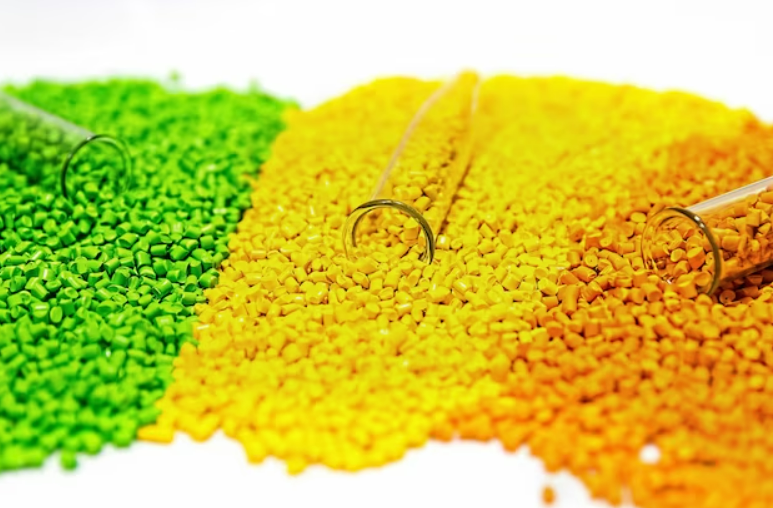ABS & ABS Compounds: Versatile Solutions for Modern Manufacturing
What is ABS?
Acrylonitrile Butadiene Styrene (ABS) is a widely-used thermoplastic polymer that combines strength, durability, and impact resistance with excellent processing capabilities. Known for its versatility, ABS is used in various industries ranging from automotive and electronics to consumer goods and toys.
ABS is a copolymer made by polymerizing three distinct monomers:
- Acrylonitrile: Provides chemical resistance and thermal stability.
- Butadiene: Adds toughness and impact resistance.
- Styrene: Contributes to rigidity and ease of processing.
The unique combination of these properties makes ABS ideal for a wide array of applications requiring a balance between toughness, strength, and cost-effectiveness.
Key Properties of ABS:
- Impact Resistance: ABS is known for its high impact strength, even at low temperatures, making it ideal for products that need to withstand rough handling.
- Durability: It has excellent resistance to chemicals, heat, and environmental stress, ensuring long-lasting performance in various conditions.
- Lightweight: ABS is relatively lightweight, making it suitable for applications that require reduced weight without sacrificing strength.
- Aesthetic Quality: ABS is often used in applications requiring smooth surfaces and vibrant color retention, such as in consumer electronics and automotive components.
- Ease of Fabrication: ABS can be easily processed using injection molding, extrusion, and thermoforming, making it a versatile material in manufacturing.
What are ABS Compounds?
ABS compounds are specially formulated blends of ABS resin combined with various additives or fillers to enhance specific properties for tailored applications. These compounds can be engineered to meet specific mechanical, thermal, or aesthetic requirements, offering custom solutions for a broad range of industries.
Types of ABS Compounds:
- Glass-Filled ABS: This compound contains glass fibers that reinforce the ABS material, improving its mechanical strength, stiffness, and dimensional stability. It’s ideal for applications that require increased load-bearing capacity and resistance to deformation under stress.
- Flame Retardant ABS: With the addition of flame retardant additives, this type of ABS compound is designed to self-extinguish when exposed to flame. Flame retardant ABS is commonly used in electrical, electronics, and automotive industries where safety is paramount.
- Impact Modified ABS: Modified with additional toughening agents, this ABS compound offers enhanced impact resistance, making it ideal for products subjected to high-impact environments, such as automotive parts and consumer goods.
- Heat-Resistant ABS: Heat-resistant ABS compounds are formulated to withstand elevated temperatures without losing structural integrity. These are used in applications where parts are exposed to high temperatures, such as under-the-hood automotive components or electrical housings.
- Transparent ABS: By using specific additives, clear ABS is produced for applications where transparency is crucial, such as in optical devices, display housings, and certain consumer products.
- Flexible ABS: This variant of ABS is blended to offer more flexibility, making it suitable for applications where the material needs to bend without cracking, such as in certain automotive and industrial parts.
Applications of ABS and ABS Compounds:
- Automotive: Used in dashboards, bumpers, wheel covers, interior components, and engine parts.
- Consumer Electronics: ABS is used in housings for devices such as televisions, computer monitors, mobile phones, and printers.
- Toys: The most famous use of ABS is in the production of LEGO bricks, thanks to its durability and ability to hold vibrant colors.
- Medical Devices: ABS is employed in medical equipment like housings for diagnostic instruments and surgical tools due to its robustness and ease of sterilization.
- Home Appliances: ABS is widely used in the construction of vacuum cleaners, coffee machines, and other household appliances.
- Packaging: Due to its formability and toughness, ABS is used in packaging materials that require resistance to impact.
Benefits of Using ABS & ABS Compounds:
- Customization: ABS compounds can be tailored to meet the specific needs of an application, ensuring enhanced performance and functionality.
- Cost-Effective: ABS offers a balance of affordability with performance, making it a go-to material for mass production.
- Environmental Resistance: ABS is inherently resistant to many environmental conditions, including UV exposure, weathering, and chemical corrosion.
- Sustainability: ABS is recyclable, and efforts are being made to produce more sustainable versions, such as bio-based ABS.
Why Choose ABS & ABS Compounds?
Whether you are designing a product for durability, functionality, or aesthetic appeal, ABS and its various compounds offer a reliable solution. With its broad spectrum of customizable options, ABS can be engineered to meet the demands of your specific industry. Its excellent processability ensures that complex shapes and tight tolerances can be achieved, while its overall strength, flexibility, and durability offer lasting performance.

